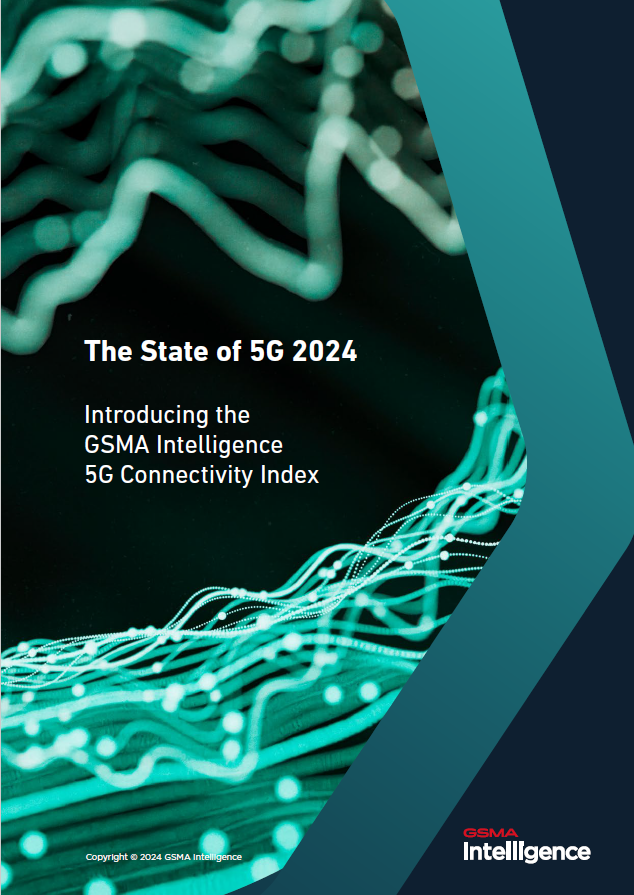The number of 5G connections surpassed 1.5 billion at the end of 2023, making it the fastest-growing mobile broadband technology to date. However, despite this progress, a new digital divide is starting to emerge between high-income and low- and middle-income countries. Furthermore, even in countries with 5G, the technology has not yet realised its full potential.
Against this backdrop, GSMA Intelligence has launched the 5G Connectivity Index to help enable increased coverage, adoption, usage and market development. The index provides a comprehensive assessment of 5G in 39 markets, offering insights for informed decision-making and investment by the mobile ecosystem and policymakers. This findings from the first edition of the index are presented in this report.
While the 5GI highlights a number of variations in 5G development by region, some general insights can be drawn:
- Consumer experience on 5G networks outperforms that of 4G in all assessed markets, with average 5G download speeds reaching around 230 Mbps by the end of 2023, a more than fivefold increase compared to 4G. In some markets, 5G speeds are more than 10 times greater than 4G. The assignment of new spectrum bands, especially in the 3.5 GHz range, has played an instrumental role in improving user experience.
- There has been significant progress in providing affordable 5G data plans and devices. More than 30 markets in the index allow consumers to access 5G data plans of 100 GB per month for less than 2% of monthly income per capita, and in the majority of markets, 5G unit prices per gigabyte are cheaper than those of 4G, allowing consumers to access higher data allowances. New smartphone shipments in high-income countries are mostly sold for over $500, while in emerging markets almost two thirds are below $250, highlighting the growing importance of lower-cost 5G handsets.
- 5G fixed wireless access (FWA) has been one of the early 5G success stories in several markets, having reached more than 5% adoption among households in Kuwait, Saudia Arabia, the UAE, Austria, the US, Germany and Australia. This represents an important use case for operators aiming to drive revenue growth, serve new market segments and better utilise network assets. It also provides high-speed fixed broadband connectivity to underserved households and can help close the digital divide between and within countries. However, in the majority of countries, 5G FWA adoption remains low and so there is significant room for growth.
- Lastly, the index shows that 5G is an evolutionary process and is currently still in the early stages. Despite the continued growth in mobile data consumption, most of the more data-intensive 5G use cases (e.g. AR and VR) remain nascent, including for consumers. Furthermore, in most markets, including those with higher 5G consumer adoption, the business-to-business (B2B) segment that operators expect to drive much of the revenue growth for 5G has not yet achieved scale. The majority of operators are yet to deploy 5G standalone (SA) networks, which is a prerequisite for unlocking the full potential of 5G. However, the deployment and densification of 5G is a challenge for operators, given the high levels of investment needed and the fact that in many markets, returns have been flat or otherwise declining.
The deployment of 5G SA and 5G-Advanced represents the next stage of 5G’s evolution to support new market demands before the development and launch of 6G towards the end of the decade. In terms of the 5GI, these technologies should drive significant improvements in the indicators that currently score poorly, particularly in the market development pillar (given the potential commercial opportunities from the B2B segment), as well as the network and experience pillars (given the infrastructure upgrades that are required). However, realising these opportunities will be dependent on wide ecosystem support, overcoming investment constraints and establishing a path to the monetisation of 5G use cases. All of this will require an enabling policy framework that incentivises investment, fosters innovation and collaboration, promotes dynamic competition and supports the timely access to the right amount of affordable spectrum in low, mid- and high bands.
The 5GI is therefore being introduced at a key point in the evolution of 5G. Going forward, it will provide the mobile ecosystem and policymakers with a comprehensive assessment of 5G development over time and enable them to target investments and resources where they are most needed.
Download the report:
https://data.gsmaintelligence.com/research/research/research-2024/the-state-of-5g-in-2024





